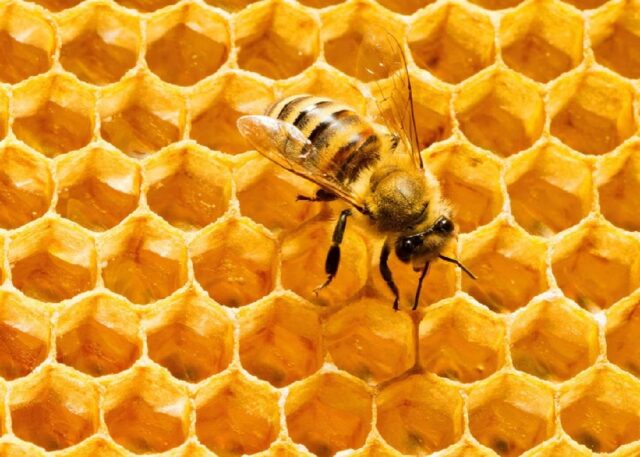Definition:
A “beehive” is a structure created by bees or provided by humans for bees to live in. It serves as a habitat for the colony, facilitating the production of honey, beeswax, and the rearing of young bees. In nature, beehives are often found in hollow trees or rock crevices, while human-made beehives, also known as apiaries, are designed to optimize beekeeping practices.
Etymology:
The term “beehive” comes from the Old English “bēo” (bee) and “hīf” (basket), reflecting the traditional use of woven baskets as artificial beehives.
In a beehive, bees exhibit highly organized and obedient behavior, which aligns with the concept of “behaving” in a disciplined or orderly manner. There’s a thematic association between the two words, making “beehive” and “behave” polysemies.
Description:
Social bees, like honeybees and bumblebees, live in colonies with a complex social structure, including a queen, workers, and drones.
- Queen: The reproductive female responsible for laying eggs.
- Workers: Non-reproductive females that perform tasks like foraging, nest maintenance, and caring for the queen’s offspring.
- Drones: Males whose primary role is to mate with the queen.
Natural beehives are built by bees using wax secreted from their bodies. They create hexagonal cells within the hive to store honey and pollen and to house their brood (eggs, larvae, and pupae). Human-made beehives are typically wooden boxes with removable frames for easier management.
Components:
- Brood Chamber: The area where the queen lays eggs and young bees develop.
- Honey Super: The section where honey is stored, often above the brood chamber in human-made hives.
- Frames: Removable structures within the hive that hold the honeycomb.
- Entrance: A small opening that allows bees to enter and exit the hive.
Symbolism:
A beehive is a language symbol as it is a structure or container where a colony of bees lives. It can be natural (like a hollow tree), as a tree is also a language symbol, or artificial (like a beekeeper’s hive).
A beehive is a vagina symbol as it is hollow, and an imprisonment symbol as it houses a colony of obedient bees.
A honeycomb consist of geometric hexagonal cells to store honey and pollen and to house their brood (eggs, larvae, and pupae). A hexagon is both a language symbol and an imprisonment symbol. Since the bees make hexagonal cells, hexagon has become a well-known symbol for bees and beehives.

Religion:
Beehives and the behavior of bees are often highlighted in religious texts and teachings:
- In the Bible, in Proverbs, chapter 16, verse 24 (NIV), it says: “Gracious words are a honeycomb, sweet to the soul and healing to the bones.” This verse metaphorically highlights that a honeycomb is a language symbol.
- In the Quran, in Surah An-Nahl 16:68-69 (Sahih International), it says: “And your Lord inspired to the bee, ‘Take for yourself among the mountains, houses, and among the trees and [in] that which they construct. Then eat from all the fruits and follow the ways of your Lord laid down [for you].’ There emerges from their bellies a drink, varying in colors, in which there is healing for people. Indeed in that is a sign for a people who give thought.”
